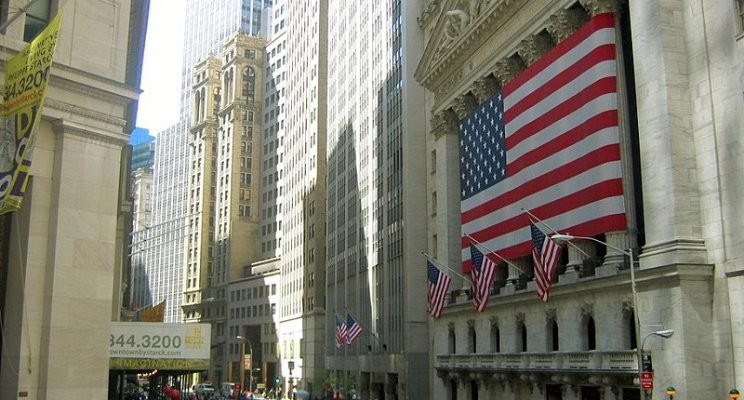
(Photo : LinkedIn)
US markets
- Global markets face volatility due to concerns over the US economic outlook and weak manufacturing data.
- Tech stocks and high-yield bonds are hit hard, with Nvidia experiencing a significant market value decline.
- The Federal Reserve's anticipated rate cut and the upcoming US jobs data are the market's focus.
- The dollar's safe haven status is under scrutiny, potentially impacting US stocks and foreign exchange.
Global financial markets are once again in the throes of volatility, with mounting concerns over the US economic outlook and a traditionally weak month for stocks creating a perfect storm. Investors are scrambling for protection, fearing another round of currency chaos. This unease follows a rapid recovery for risky assets such as stocks and high yield bonds from an early August selloff. However, the short-lived optimism that US interest rate cuts would support growth has faded.
The market's focus is now on the upcoming US jobs data, expected to echo last month's weak report. This anticipation was heightened by Tuesday's weak US manufacturing data, which triggered fresh selling. Wall Street's S&P 500 share index fell over 2% on Tuesday, while Japan's broad Topix share gauge plunged 3.7% on Wednesday, marking its biggest daily drop since the August 5 market rout. European stocks also tumbled.
The VIX index, which measures expected US equity volatility, has hit a one-month high. This turbulence threatens the dollar and other haven currencies, adding to the market's unease. Markets were dealing with uncertain inflation but growth was resilient, said Florian Ielpo, head of macro at Lombard Odier. That situation seems to be changing, the new uncertainty is how deep will the slowdown be.
Tech Stocks and High-Yield Bonds Bear the Brunt
The tech sector, particularly highly valued stocks, has been hit hard. AI heavyweight Nvidia slid 9.5% on Tuesday, marking the deepest ever single-day market value decline for a US company. Dutch semiconductor equipment supplier group ASML Holdings slumped around 5% on Wednesday. One of the big risks is that you have this market concentration, and all it takes is one of those (big tech) names to be volatile, for it to feed through to the entire market, said Justin Onuekwusi, CIO at investment firm St. James' Place.
The market's volatility has been exacerbated by a divergence in the stories being told by stocks and bonds at the start of September. Equity markets had priced robust company earnings, while government debt rallied in anticipation of deep US rate cuts and recession risk. You need to decide now whether you like credit and bonds or equities, said Lombard Odier's Ielpo, who added he had bought government bonds over the last four weeks.
The Federal Reserve is expected to cut rates for the first time since 2020 on Sept. 18, with money markets now pricing a 43% probability of a 50-basis-point reduction in its funds rate to 4.5%-4.75%. This anticipation has led to a rise in the performance of high-yield corporate bonds, which have increased 2.5% since dropping briefly in early August.
Dollar's Safe Haven Status Under Scrutiny
However, some investors remain cautious about US high yield bonds, sold by borrowers whose weaker financial profiles make them sensitive to economic shocks. US high yield is more prone to a repricing because of valuations and recession fears, said Ninety One credit fund manager Darpan Haran.
The dollar's traditional status as a safe haven in times of market turmoil is also being tested. Uncertainty about whether the dollar would retain its appeal when risky assets fall or suffer because traders believe a recession is on the horizon is causing concern. Short-term speculators have a roughly $9 billion bet on the dollar falling against other major currencies, a position that could spark more foreign exchange swings if proven wrong, or further weaken US stocks if it is accurate.
If US jobs data this week come out strong, the dollar may strengthen, causing brisk exits from those short positions and hitting currencies speculators currently prefer, like the British pound. An index of foreign exchange volatility is heading back towards peaks hit in early August.
Societe Generale chief FX strategist Kit Juckes said over the longer term, the dollar and US stocks could drag each other lower because of the vast magnitude of funds that had now flowed into Wall Street stocks from overseas, without currency hedging. The risk for the dollar is that people actually don't just go off the dollar, but they also come out of US stocks as well, he said.
The volatility has led to a sell-off in stocks, particularly in the tech sector, and a rise in bond yields. The dollar's status as a safe haven is also being tested, adding to the market's unease. Investors and market watchers will be closely monitoring the upcoming U.S. jobs data and the Federal Reserve's decision on interest rates, both of which could significantly impact market dynamics.









